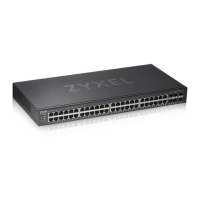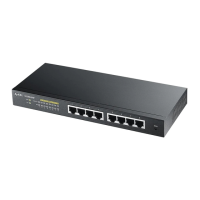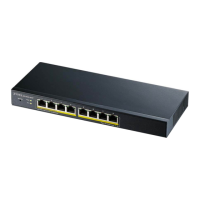Chapter 40 Static Multicast Forwarding
GS1920v2 Series User’s Guide
246
CHAPTER 40
Static Multicast Forwarding
40.1 Static Multicast Forwarding Overview
This chapter discusses how to configure static multicast forwarding rules based on multicast MAC
addresses or multicast IPv4 addresses.
Use these screens to configure static multicast address forwarding by defining the ports and VLANs that
multicast traffic can pass through the Switch. If a subscriber is on a different port or VLAN, then the
subscriber will not get the multicast.
40.1.1 What You Can Do
Use the Static Multicast Forwarding By MAC screen (Section 40.2 on page 247) to configure rules to
forward specific multicast frames, such as streaming or control frames, to specific ports.
40.1.2 What You Need To Know
A multicast MAC address or multicast IP address is the MAC address or IP address of a multicast group,
and not a receiving device.
A static multicast address is a multicast MAC address or multicast IPv4 address that has been manually
entered in the multicast table. This identifies the destination of the multicast content. Multicast IPv4
addresses uses the Class D IP addresses range 224.0.0.0 to 239.255.255.255. Multicast MAC addresses
have a “1” as the last binary bit of the first octet pair (for example, 01:00:5e:00:00:0A). Static multicast
addresses do not age out. See IP Multicast Addresses on page 220 for more information on IP multicast
addresses.
Note: Static (manual) multicast forwarding allows you (the administrator) to forward multicast
frames to a member without the member having to join the group first.
If a multicast group has no members, then the Switch cannot forward to specific ports unless you
configure static (manual) multicast entries. The Switch will either flood the multicast frames to all ports
(default) or drop them. Figure 176 on page 247 shows such unknown multicast frames flooded to all
ports. With static multicast forwarding, you can forward these multicasts to ports within a VLAN group.

